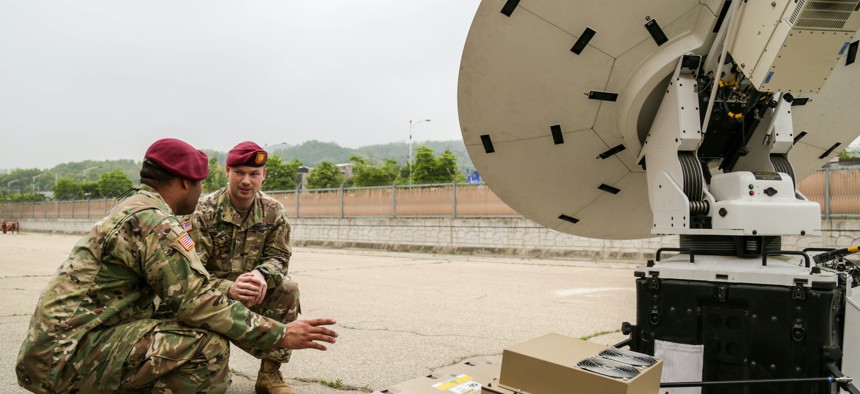TARA COPP

U.S. Space Command and Army Space and Missile Defense Command are combining the military’s cyber, special operations, and space capabilities to create a new deterrent “triad” akin to the approach the U.S. uses. to deter nuclear attacks.
The Army is “developing an innovative way to generate asymmetrical advantages by fusing the effects of space-based cyber and SOF [special operations forces] capabilities across the compromised spectrum of conflict. This influence triad represents a key evolution in these highly specialized fields,” Gen. James Dickinson, head of U.S. Space Command said at the Space and Missile Defense Symposium in Huntsville Tuesday.
In the new triad concept, U.S. Special Operations Command and U.S. Cyber Command personnel are embedded with staff from the U.S. Space Command to link the three triad elements—intelligence from space-based assets, intelligence from cyber detection, and intelligence from special operations forces—to amplify all three capabilities when monitoring, influencing, or deterring an adversary.
Dickinson said this could include having combined teams dedicated to defending critical cyber infrastructure, or having teams create information warfare cells where satellite taskings are supported by special operations forces.
“The fusion of traditional space-based capabilities with cyber and SOF can generate new and responsive deterrent options,” Dickinson said.
Across the combatant commands, integrated space teams from the three elements are now embedded in each, to ensure that space capabilities are considered in all operations, plans, and exercises, Dickinson said.
The new structure reflects how U.S. military space assets are becoming a more visible and integrated part of national defense, beyond their more traditional role of missile launch detection, as Space Command and the Space Force become more involved in ground-based intelligence collection through satellites and sensors in low-Earth orbit.
“If we are to stay ahead of our competition … close coordination between U.S. Space Command, U.S. CYBERCOM and U.S. SOCOM is a must,” Dickinson said.
The new triad would be supported by what Dickinson described as two additional triads: One that involves the fusion of space-, sea- and land-based sensors, and one based on improving intra-service and international partnerships.
No comments:
Post a Comment